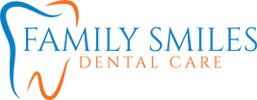Daily dental hygiene is one of the most important parts of dental care. Our team recommends making brushing and flossing a normal part of your day and encourage you to make these hygiene behaviors a habit. Check out our easy guide below or call Family Smiles Dental Care at (248) 853-2222 to schedule a visit with our dentist to learn more about dental hygiene in Rochester Hills, MI.
First time visiting?
Visit the Patient Center to learn what to expect from your first visit, forms, financial policies, and frequently asked questions!


